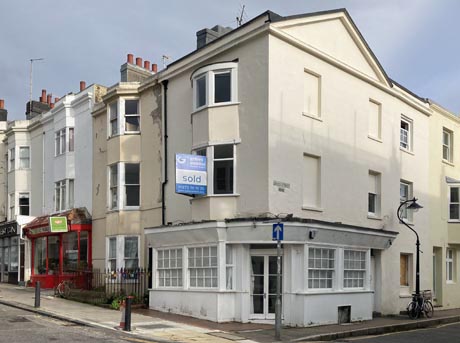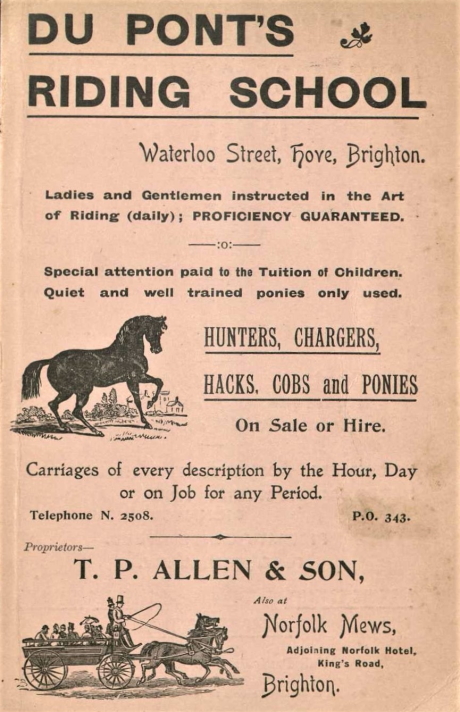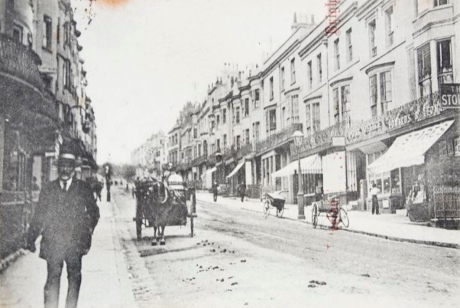42 Waterloo Street
Many of the houses in Waterloo Street, catering for visitors and residents of the fashionable Regency Brighton seaside resort, established themselves as lodging houses. (There were 18 in 1851 and 32 by 1862.) Most of these were along the west side of the street. However, number 42, at the north-eastern end, was typical of the houses here in showing us a range of different trades over the years, again providing for the needs of the local inhabitants.

November 2023 and another change of ownership.
As with some other houses in the street, number 42 was occasionally quite overcrowded. The 1841 Census, for instance, shows four households, three of which had servants. In 1851 and 1871 we see a house with seven residents, six in 1881 and 1911 and eight in 1901 (though the house does seem to be unoccupied in 1891.)
One of the main areas of trade of the house over the years, and with different households, is that of food and drink.
Joseph Anscomb in 1841 was a brewer and, in 1848, E. Robins & Sons used the premises as wine and spirit merchants. The Folthorp Street Directory shows John Knight as a butcher and then the 1851 Census shows him as a baker (employing four men), with George Elliot, Henry Brooker and William Tanner as butchers.
From 1854 to 1862 we see the Burford family as bread and biscuit makers and confectioners, followed by the Chandler family from 1864 to 1870 doing the same.
Later, in 1913, we see J. Hill, and then Maurice Wotton in 1923, also confectioners. From 1930 to 1974, first Frederick Westgate, then George Tugwell, were recorded as butchers.
A rather different profession was seen from 1871 to 1873 with K. Pears as ‘pharmaceutical chemist’. Whilst it can be said that, generally, most people in the house over the years are recorded as coming from Brighton, Hove or Sussex, Mr. Pears came from London and his wife, Sarah, came from Somerset.
From 1877 to 1881, John Forrester, and 1884 to 1889, J. Harris, are recorded as saddlers. Notably, the Du Pont Riding School existed then, on the opposite side of the street and stables were certainly a feature of some of the larger houses.

Flyer for Du Pont’s Riding School
From 1892 until 1914 we see the other main profession in the house, that of dress and mantle makers, conducted by various members of the Brockhurst family.
Though Edgar, brother to Ellen Brockhurst, is recorded in the 1901 Census as a market gardener, his wife and children were involved in the dressmaking business. Worth noting too is that they are recorded as being born in London.
Perhaps as the years progressed, with improved transport, such fluidity became more possible.

Waterloo Street in 1904 from the James Gray Collection courtesy of The Regency Society
We can see, then, that No. 42, gives us a good glimpse of how such a house, so situated, was able to address some of the needs of those living in and visiting the developing Brunswick Town.
Research by Shirley Allen, 2022
Return to Waterloo Street page.


